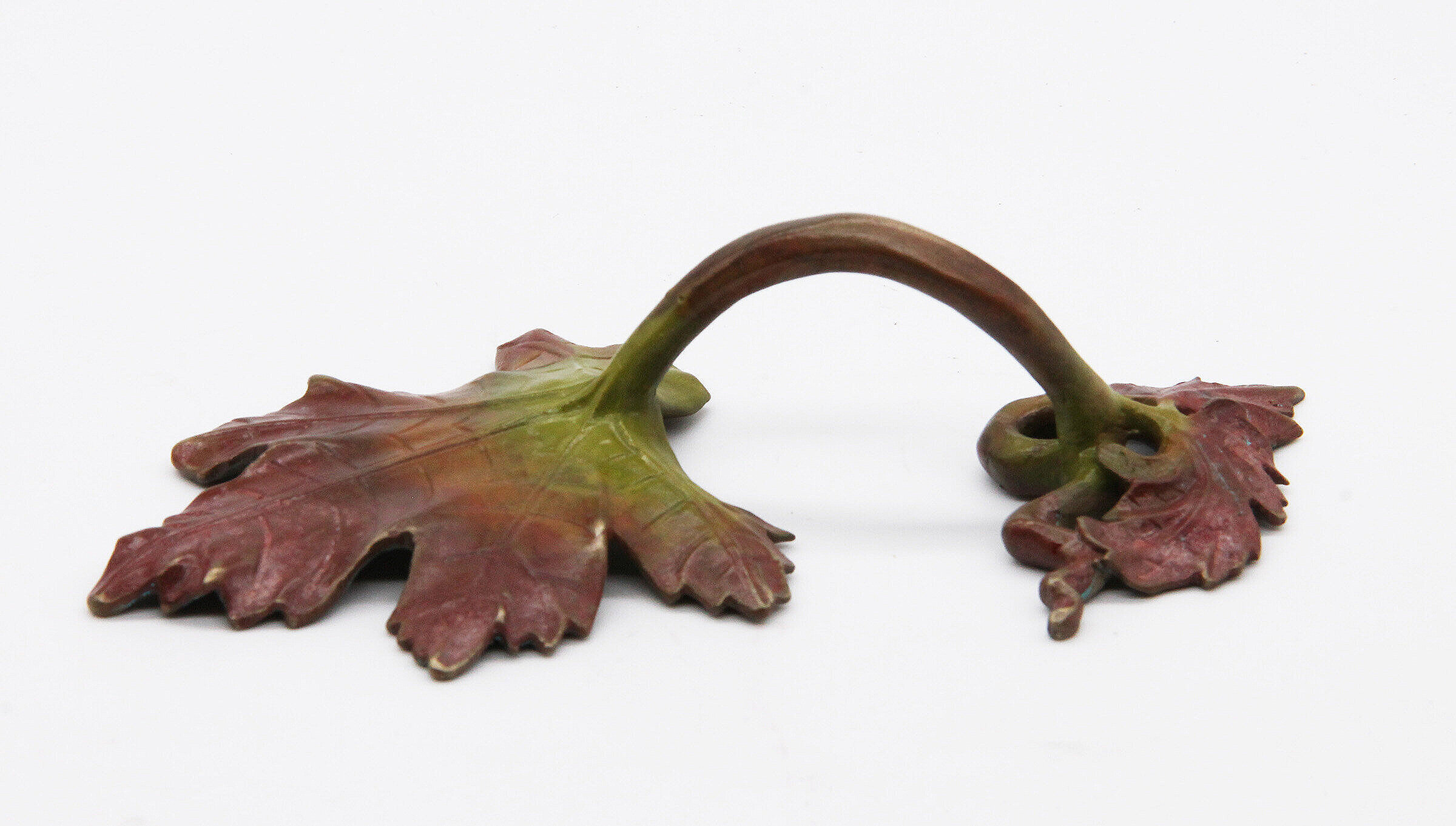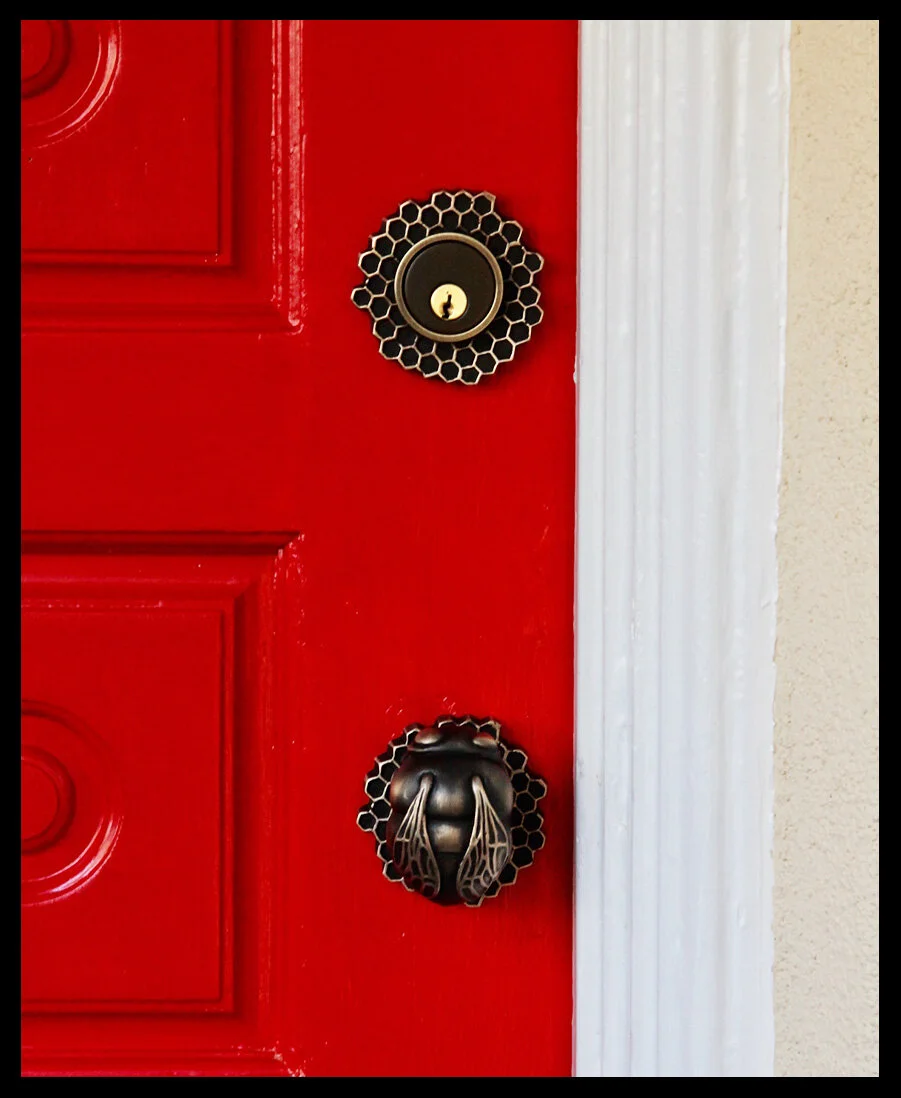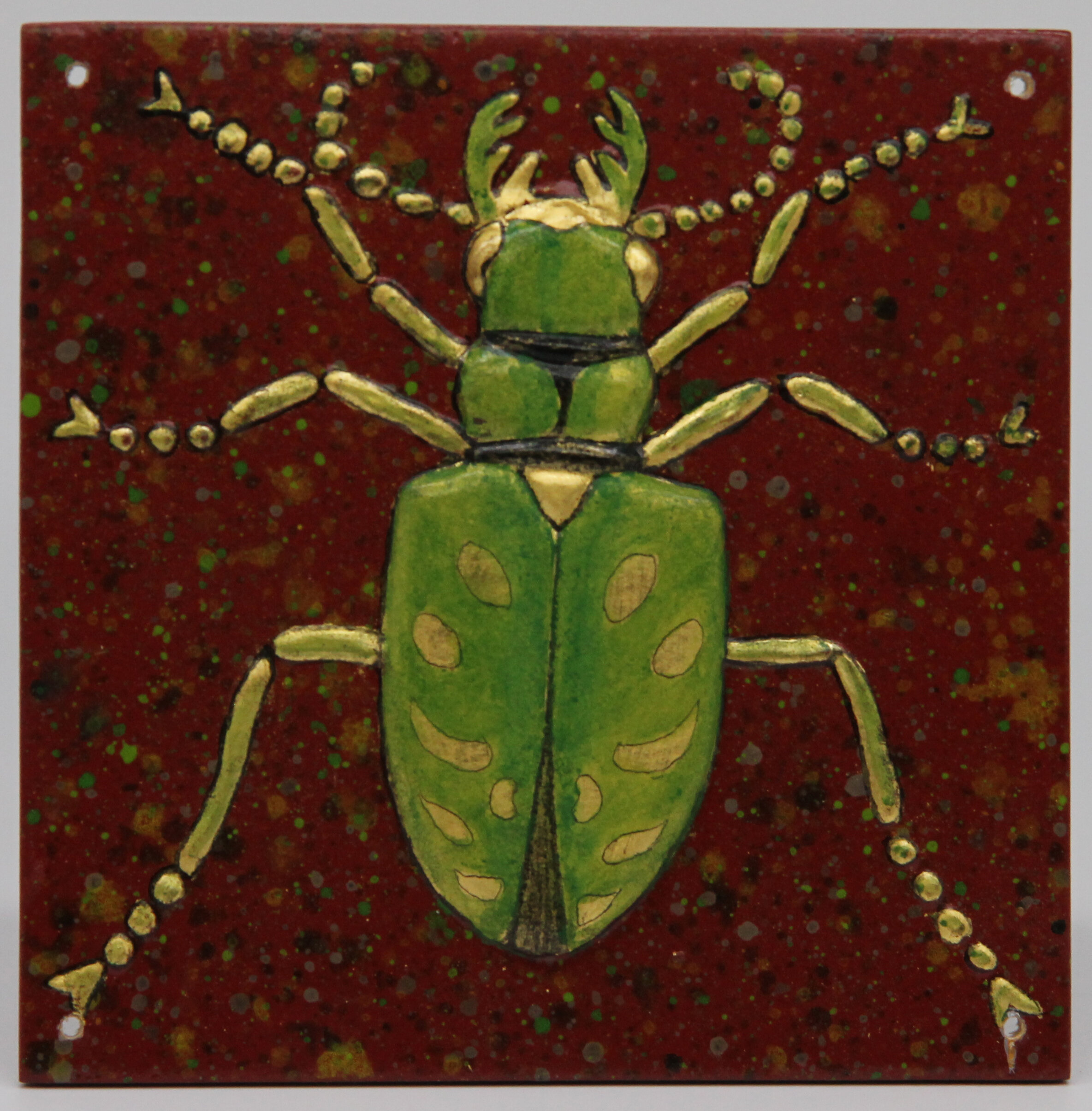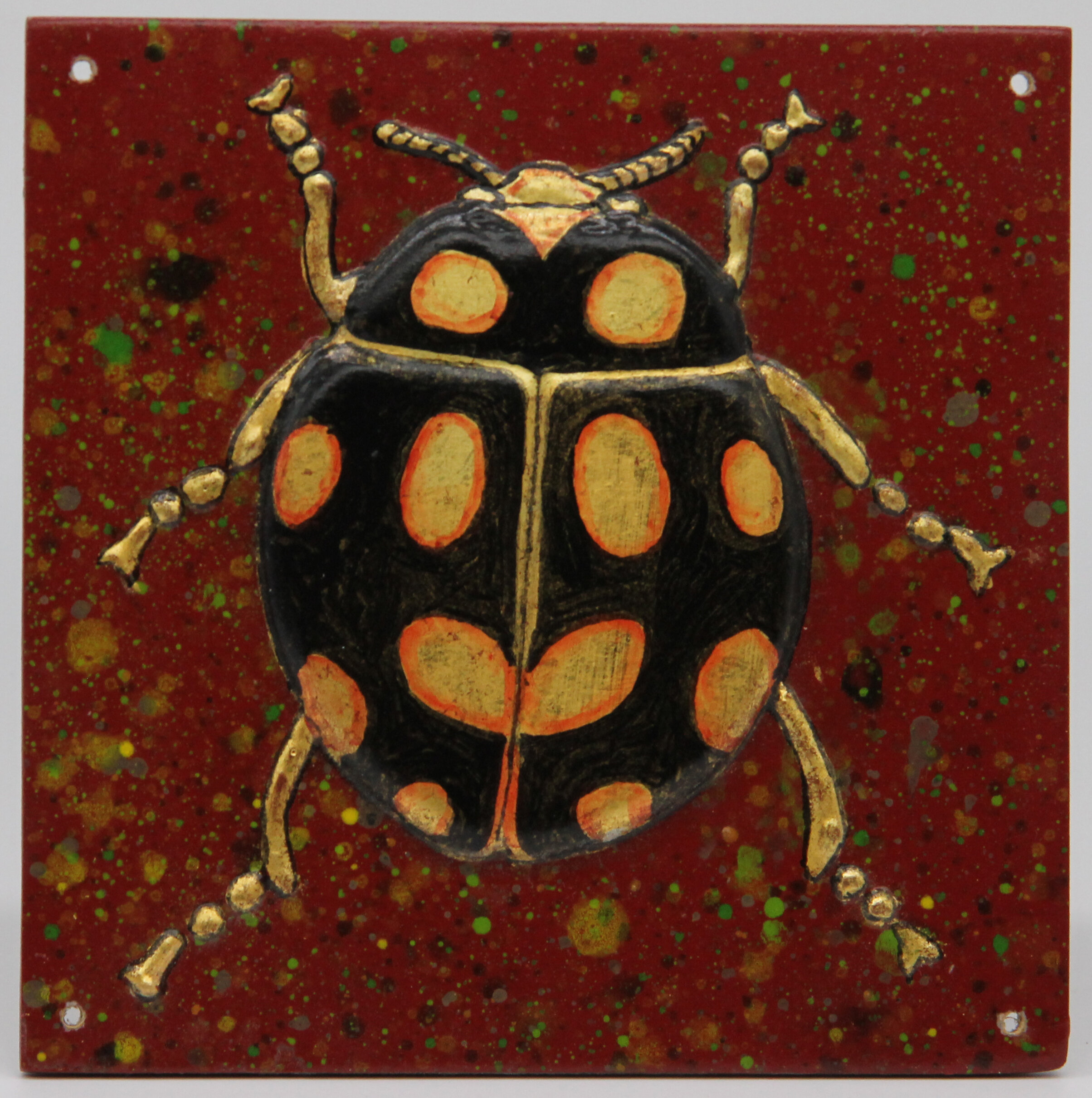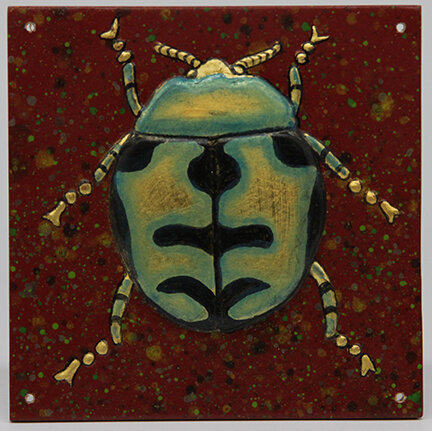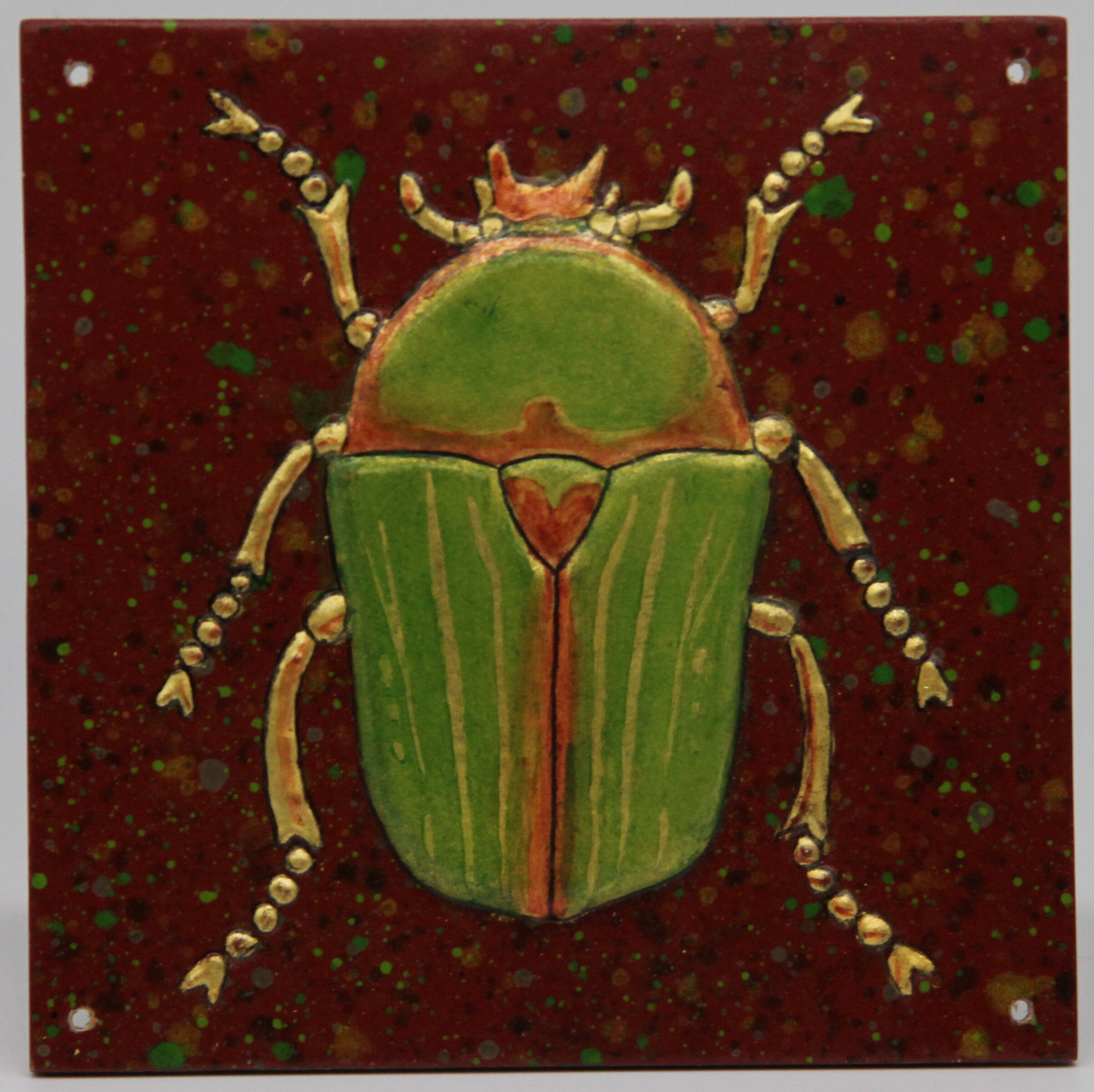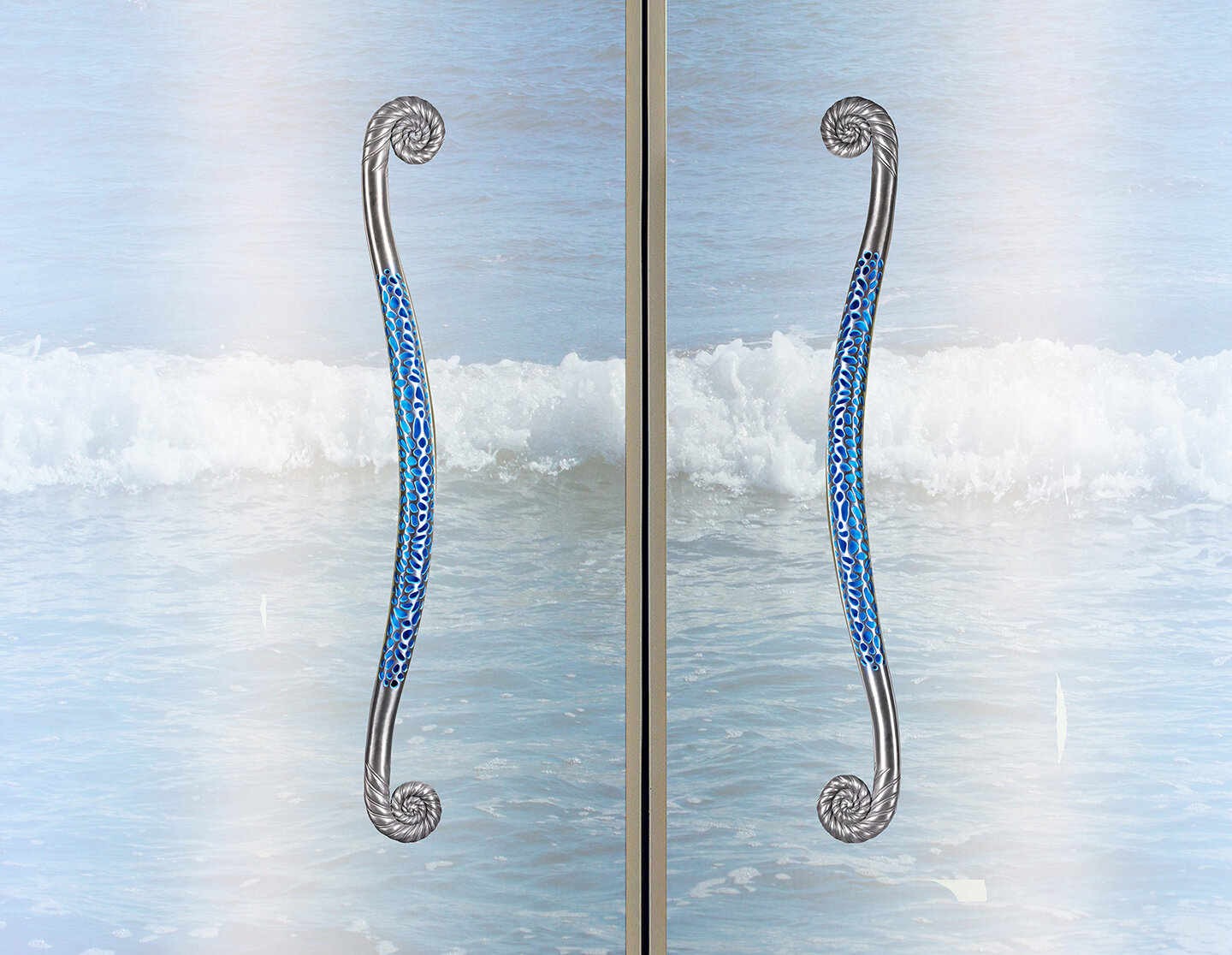The lizard heroic handles as is clear from their name are large sculptures and they are the signature pieces to this collection of door handles and cabinet pulls. The handle and escutcheon are welded together to make one entity but are cast in 2 halves. When the original pattern was carved we had to consider how the bronze would flow within the molds and made the decision to carve the body as one piece but carve the lizards toes as part of the stone plate. Had we decided to leave the toes as part of the lizard they would have been too fragile to support and would have been prone to distortion when made in wax or when invested with bronze.
The butterfly thumb latch when depressed opens the mortise latch
Forward position of the right lizard enables the head of the lizard to be grabbed with your right hand freeing the left hand to operate a thumb latch when used with of an operative mortise latch and butterfly thumb piece.
When asked if we could make either lizard narrower so that the handle could snuggly fit around the glass panes of an existing door my first reaction was no but I came to re-think my position when given the specifics dimensions of the door. Both the left and right lizards measure 5 ½” at their widest points but the narrower areas range from 2 ½” to 3 ¾” which gave us the possibility of modifying the back-plate and positioning the lizard to fit between the door panes. Since the toes of the lizard are part of the plate, we had to avoid these when slimming the plate during the wax stage. The right lizard overlaps the top edge of the plate so that it can be used in conjunction with a butterfly thumb latch when being used as part of an operative mortise set. The forward position of the right lizard and the position of the toes would have made it difficult to customize for this client’s door.
Left: Original Lizard Center: Orange area where wax to be cut Right: Modified Concept
Concept drawing showing position of modified left lizard






















